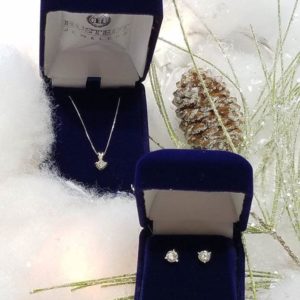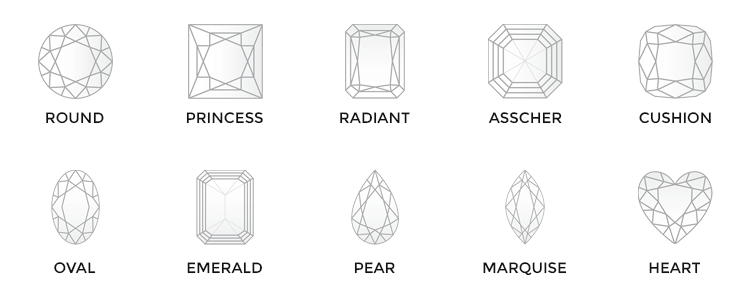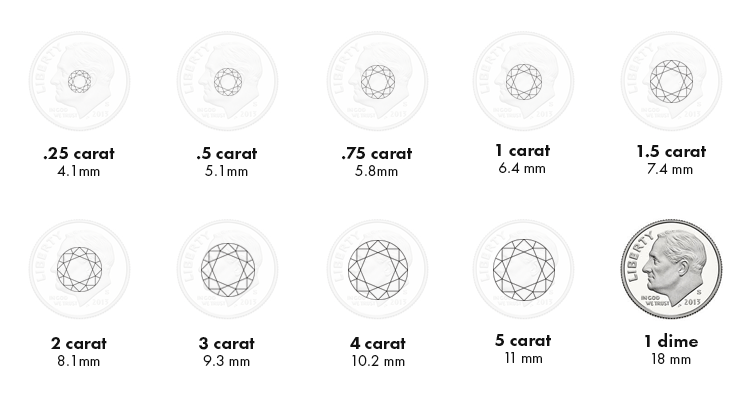Diamond Jewelry
Diamond Jewelry From The Experts
 Diamond jewelry evokes an undeniable sense of elegance and distinction.
Diamond jewelry evokes an undeniable sense of elegance and distinction.
They represent sophistication and refinement.
Because diamonds are practically indestructible, they’re the traditional choice for engagement rings.
Diamonds are the birthstone of all the people lucky enough to be born in April.
At Hustedt Jewelers, we’re diamond experts, and since consulting with a diamond expert is the best way to help you understand and evaluate all the features of the diamond piece you’re looking for, it’s a good thing you’re here.
We’ve created a detailed guide to help you make the best decision about which diamond to buy and published it on our blog, but here are the basics:
The Four C’s
Diamond shoppers should always consider the four C's of diamond quality: cut, color, carat, and clarity. These key factors will help you find the perfect diamond for your needs. Quality diamonds all come with a certification report from either the Gemological Institute of America (GIA) or American Gem Society (AGS) that details each of these ratings.
Cut
Visible to the naked eye, a diamond's cut is the most important of the four Cs. Round diamonds are the most common. Fancy cut diamonds include princess, emerald, oval, pear, cushion, radiant, Asscher, and heart cuts.

Color
Color is the second important factor to consider when you’re choosing a diamond. The “color grade” is based on the lack of tint in a diamond. The higher the grade, the clearer the diamond. While shopping, remember that the color of the stone’s setting will impact how the color of the diamond is perceived.
The GIA measures diamond color on a scale from D to Z. A D-grade diamond is completely colorless; a Z-grade diamond will have a noticeably yellow or brown tint.
The AGS uses a numerical scale with 0.0 indicating a completely colorless diamond and a 10 indicating a light tint. 
Carat
A diamond’s carat refers to its weight. One carat weighs 200 milligrams, but many beautiful diamonds are only a fraction of a carat. The greater the carat, the more a diamond is worth. The carat alone does not determine the size of the diamond, as this measure only tells you how heavy the stone is. For example, round diamonds have a larger circumference than fancy cut diamonds, which have greater depth.
You should select the cut and color of your diamond first, and then choose the highest carat that fits your budget.
It is important to note that a diamond’s carat is different than the karat measurement used for gold purity.

Clarity
Clarity refers to the number of imperfections (or inclusions) in a diamond. Because most inclusions are not visible to the naked eye, this is the last factor we consider when consulting with clients.
When you receive the conflict-free diamond rating report, you will see a diamond “plot” that shows you where the inclusions are within the stone.

